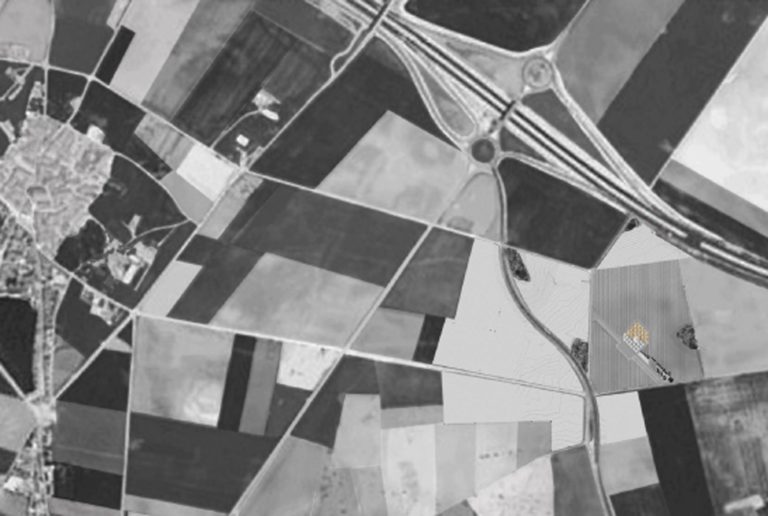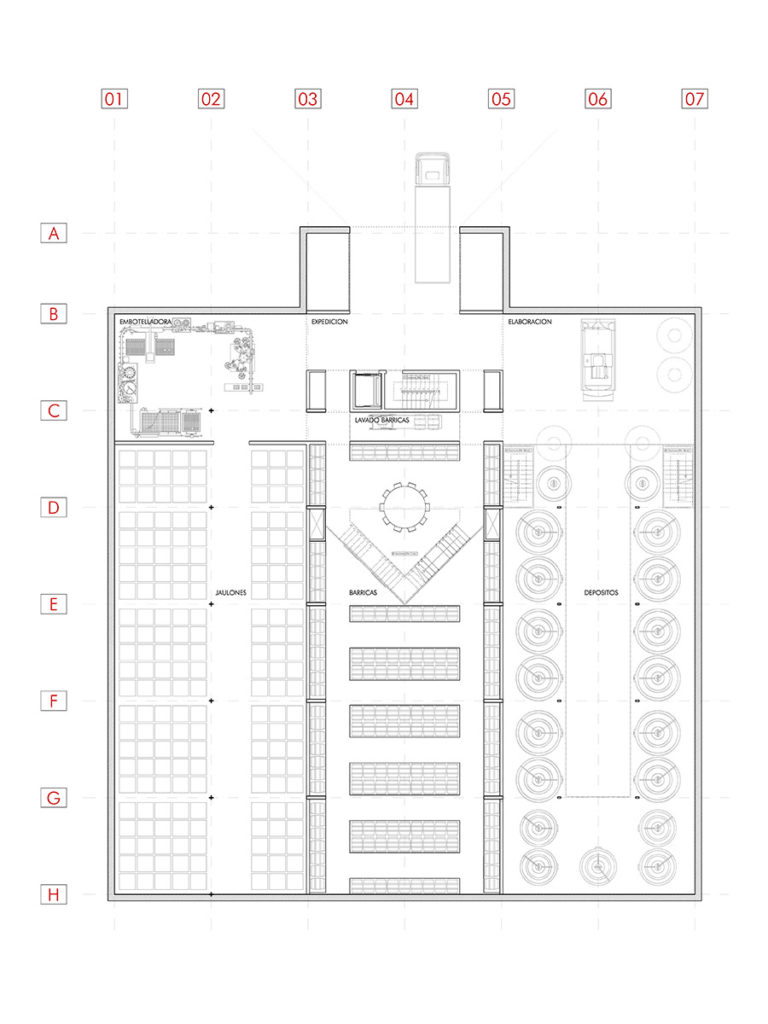Frontaura Winery

Frontaura Winery
The project unfolds in a single building divided into three highly different areas as per the requirements of the wine-producing process.
In compliance with the functional program in the winery building, there are two spaces with different uses: the winery itself, where the making of the wine and the subsequent processes up to and including its marketing take place, and the social building. Following the idea of utilizing the concept of gravity in the production of wine, the winery building is planned to be half-buried. Discernible at below ground level are three naves, each one associated with a certain stage of production, the far ends of which are almost totally double-height.
And so taking place at the more northwesterly end are the processes that extend from the receiving of the grapes to their fermentation in the vats of steel and wood necessary for the processing of 700 kilos of grape.
In the center nave are the vats and in the third the bottling plant, storage space for up to a million bottles and the dispatching department.
The social building evolves of a piece on the ground floor, mostly in the central nave. It has a meeting room, offices and a laboratory for the use of the winery personnel, an oenotheque, a large lobby where small receptions or activities of various kinds to do with the world of wine can take place. The entrance to this lobby is through a covered patio, which is converted in turn into an excellent space for open-air events.
The building is accessible at two levels. At the basement level, for everything to do with the functioning of the winery and its installations, and at the ground-floor level for the reception of both grapes and visitors, the independence of both circulations being preserved without getting in the way of each other.
The rolling nature and colors of the Castilian landscape underlie the genesis of the design.
The roof monopolizes all the expressive power of the building. Its gold and silver skylights reinterpret the rolling landscape and without neglecting their function they extend at those points in the winery where the need for light is greater. Their outward appearance recreates the golden summer of the Castilian tableland in their gold coloring and the leaden grayness of the winter sky in the silver. Like this, the extreme continental climate of the area, which gives an exceptional quality to the grapes and is fundamental for the making of good wines, participates in the design process.
Its practically northward orientation enables the building to get a homogeneous light ideal for working in. The areas where the entrance of light has to be restricted are situated strategically, such as the bottle racks or barrels, where the light is weaker.
It is the grapevines, set out in lines running north-south to make most use of the sunshine, that introduce us to the building.
Once inside, the lobby acts as a central space for the entire process. An ongoing visual contact is established with the different stages of production; the stainless-steel vats, or the big wooden ones, where the fermentation of the wine takes place, the barrels, which are glimpsed through the central stairwell that will lead us to them, up to a much more intimate vaulted space of lesser height and, finally, the bottling plant, which brings the process to an end.
The facades of the winery continue with the triangular geometry and the chromatic interplay established by the roof. Where the exhibition and wine-tasting area is, the lower wall disappears, creating a huge picture window that enable us to enjoy the sea of vineyards. Where the wall goes on being a wall, the vegetation will invade it, producing the sensation that gold and silver float over the grapevines.
Exposicions
2012
- “OAB - OFFICE OF ARCHITECTURE IN BARCELONA”. Hall of the UEM. Madrid.
2011
- "ZAXXI. ARQUITECTURA ZAMORANA DEL S.XXI" Iglesia de la Encarnación, Zamora.












